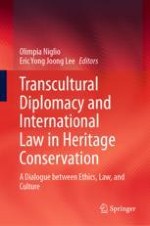2021 | OriginalPaper | Chapter
Traditional Cultural Expressions (TCEs), Holder Communities and Conflicts with Central States: Policies for the Recognition of Intangible Cultural Heritage (ICH) and Intellectual Property (IP) Regulation
Authors : Carla Zuddas, Andrea Cocco
Published in: Transcultural Diplomacy and International Law in Heritage Conservation
Publisher: Springer Singapore
Activate our intelligent search to find suitable subject content or patents.
Select sections of text to find matching patents with Artificial Intelligence. powered by
Select sections of text to find additional relevant content using AI-assisted search. powered by
